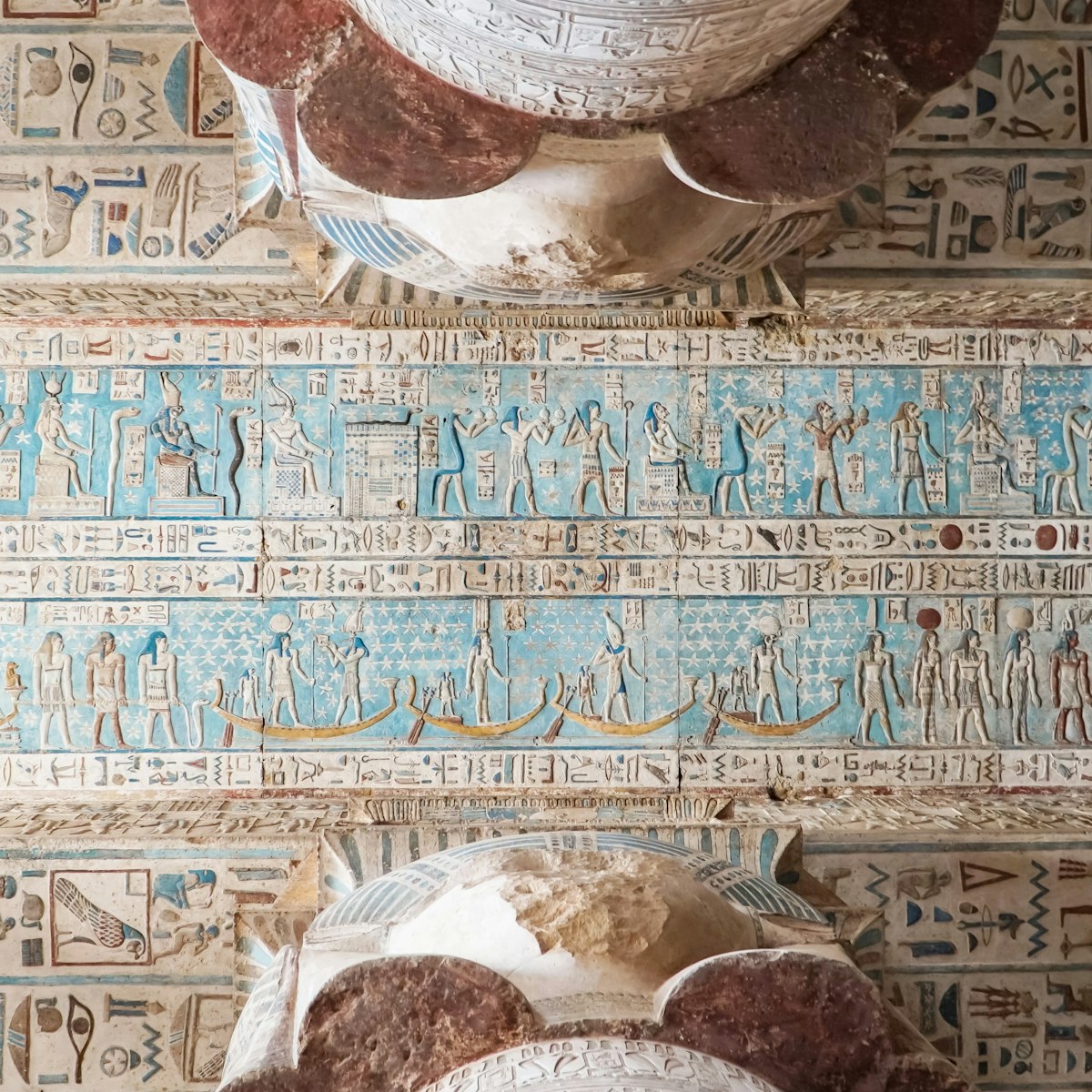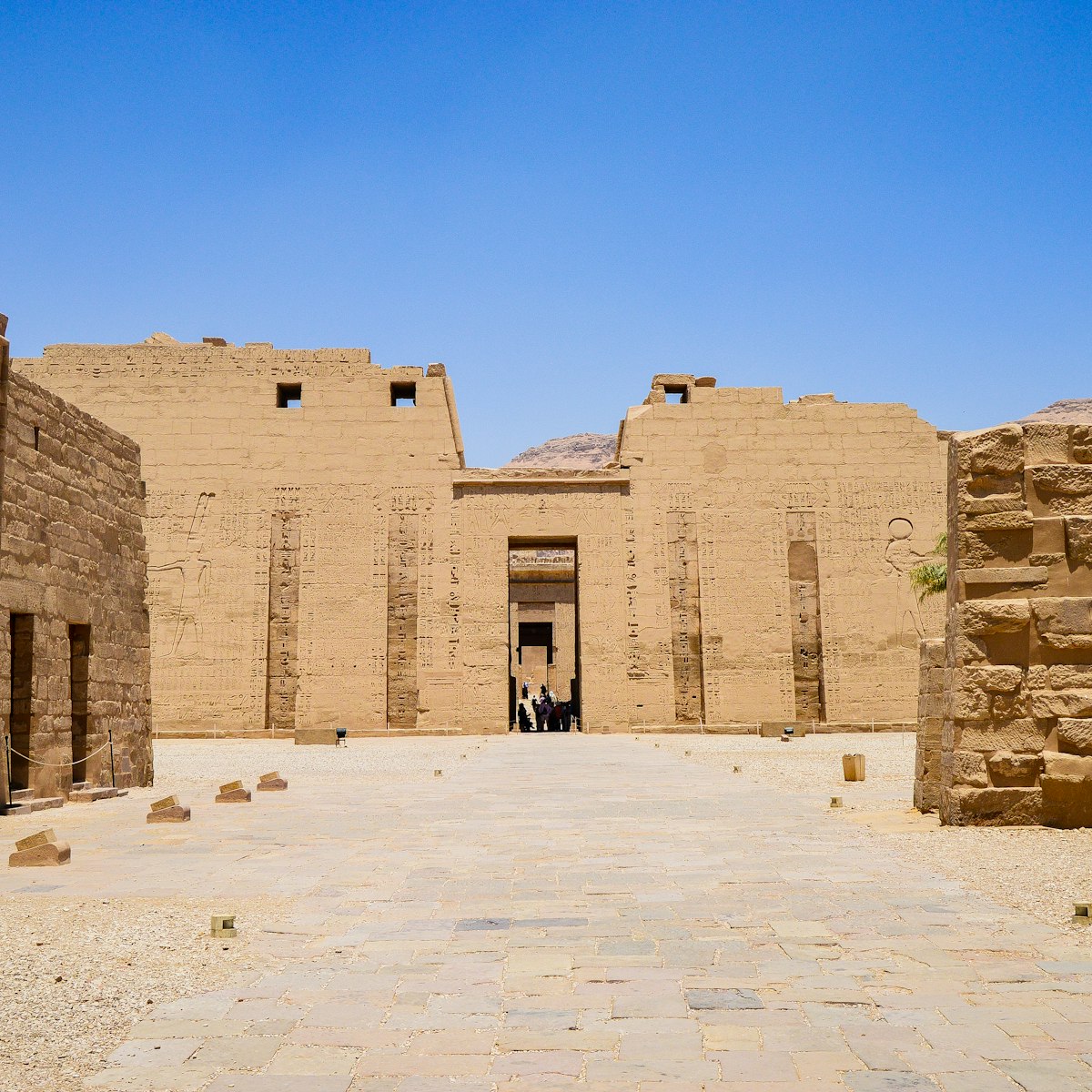This 91m-long tomb was built for Amenhotep II (sometimes also called Amenophis II), who succeeded his father, the great king Tuthmosis III. Amenophis died around 1400 BC after a 26-year reign, long enough to excavate this large and complicated tomb with its six-pillared inner hall leading to the burial chamber. The pharaoh's remains were found here along with many other royal mummies when the tomb was opened by French archaeologist Victor Loret in 1898.
One of the deepest structures in the valley, this tomb has more than 90 steps down to a modern gangway, built over a deep pit designed to protect the inner, lower chambers from both thieves (which it failed to do) and from flash floods.
Stars cover the entire ceiling in the huge burial chamber and the walls feature, as if on a giant painted scroll, text from the Book of Amduat. While most figures are of the same stick-like proportions as in the tomb of Tuthmosis III, this is the first royal tomb in the valley to present figures with more rounded proportions, as on the pillars in the burial chamber showing the pharaoh before Osiris, Hathor and Anubis. The burial chamber is also unique for its double level; the top level was filled with pillars, the bottom contained the sarcophagus.
Although thieves breached the tomb in antiquity, Amenhotep’s mummy was restored by the priests, put back in his sarcophagus with a garland of flowers around his neck, and buried in the two side rooms with 13 other royal mummies, including Tuthmosis IV (1400–1390 BC), Amenhotep III, Merenptah, Ramses IV, V and VI, and Seti II (1200–1194 BC), most of which are now at the Egyptian Museum.







